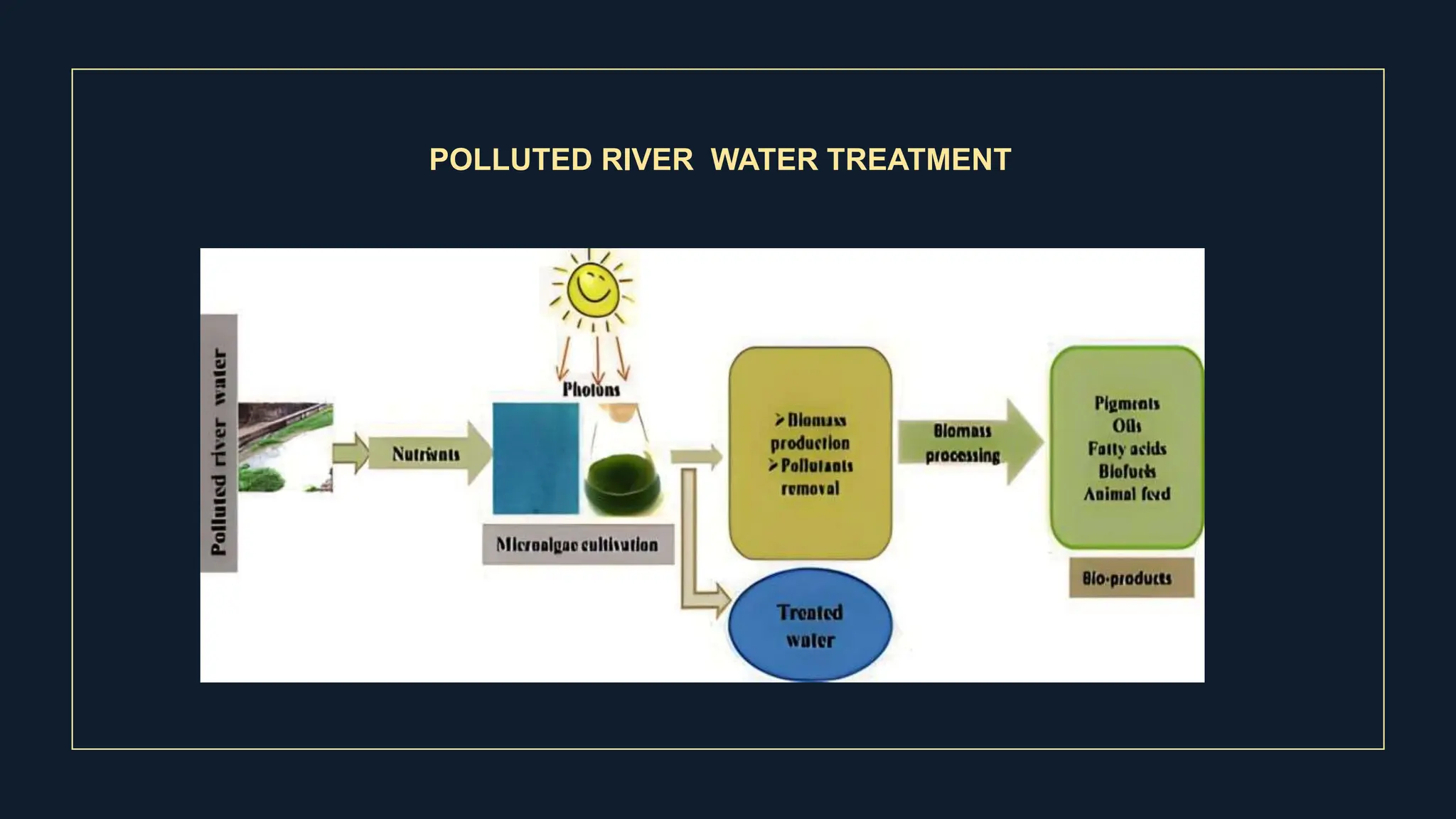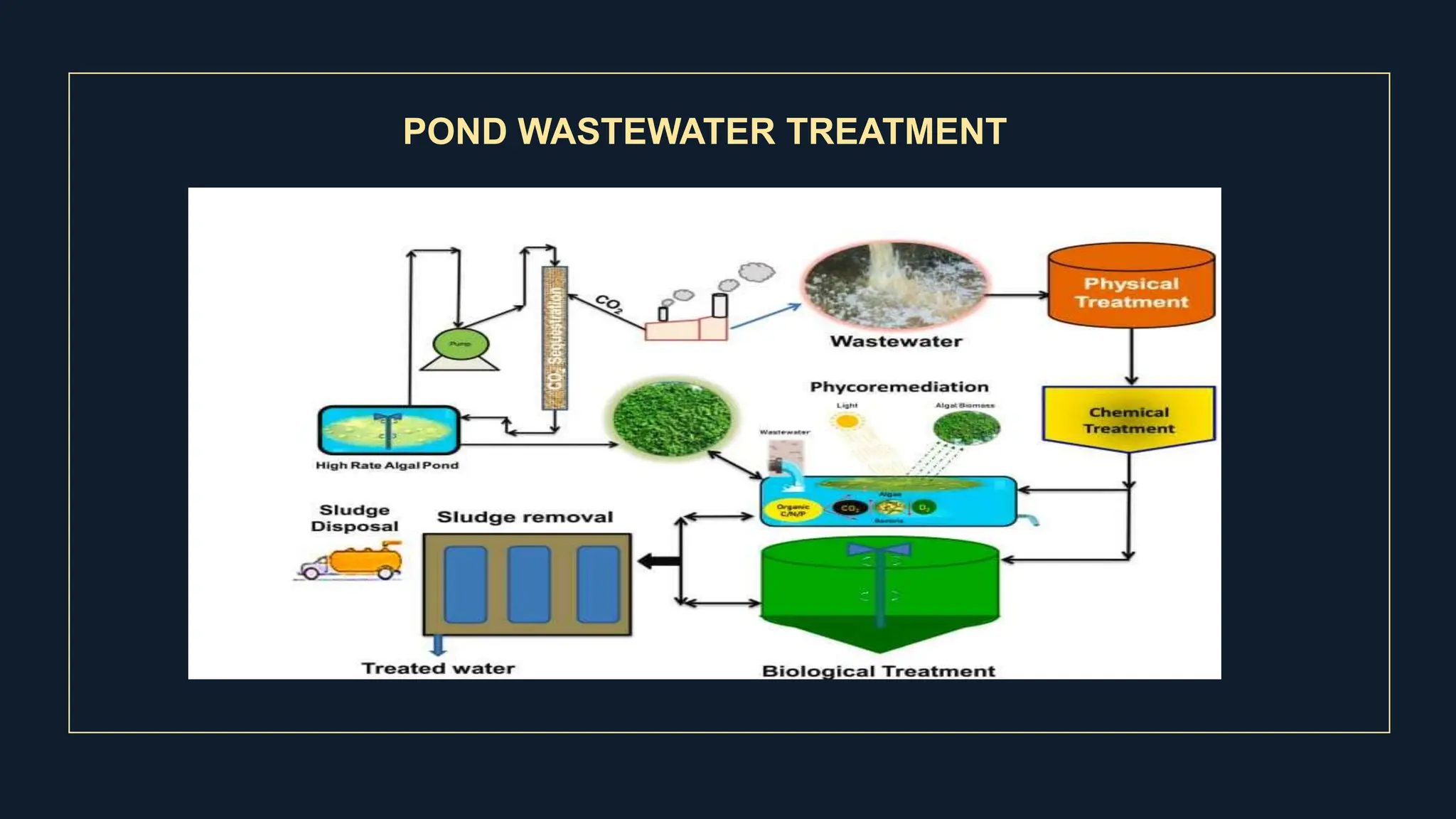This document discusses the use of microalgae (phycoremediation) for wastewater treatment. It begins with definitions of phycoremediation and discusses how it utilizes microalgae and macroalgae to remove or transform pollutants from wastewater. The document then outlines several applications of phycoremediation including removal of nutrients, organic matter, and heavy metals. Specific examples of phycoremediation being used to treat domestic wastewater, industrial wastewater from textile, food, tannery, chemical and pharmaceutical facilities, are provided. The document emphasizes that phycoremediation is an environmentally friendly alternative to conventional wastewater treatment methods.





















